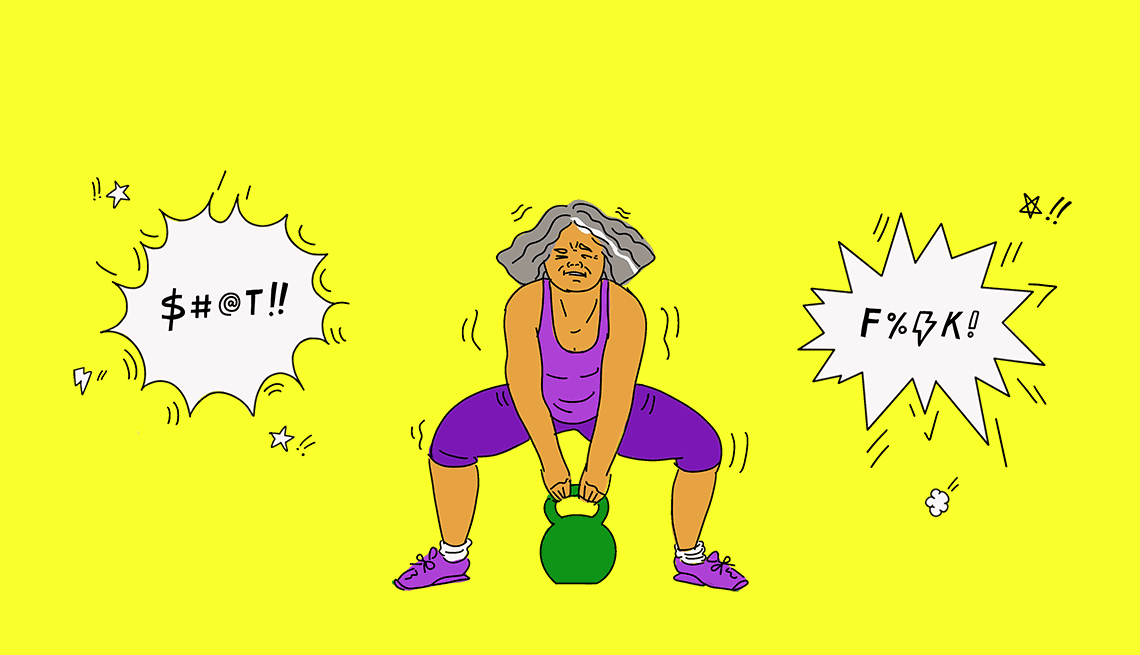AARP Hearing Center


It’s not often that your potty mouth is granted a pass, but that’s exactly what a growing body of research offers anyone looking to improve their workouts, including the millions of older adults who hit the gym regularly.
Experts have known for a while that taboo words (and we aren’t talking dang or darn) have the power to help us release a range of emotions, both positive and negative. Turns out, that very quality comes in handy during certain types of exercise.
In a landmark study published in 2018 in the journal Psychology of Sport and Exercise, a team of researchers — working off a hunch that dropping the F-bomb during exercise can improve power and strength — asked participants to choose a swear word they might use in response to accidentally banging their head. They were then asked to repeat that swear word every three seconds during a 30-second, high-intensity cycling test that measures muscle strength and power.
Participants were also asked to repeat a swear word for 10 seconds before undergoing a test measuring grip strength and to continue repeating their swear word throughout the test. In both instances, researchers found that swearing improved performance: It increased peak and average power on the cycling test by 4.5 percent, on average, and grip strength by 8 percent, on average, compared to repeating a non-swear word.
In a separate study, published in 2022, participants were asked to do chair push-ups, which involve using your hands to raise your body off a chair and holding the position for as long as possible. Those who repeated a swear word while doing so could hold the position for 10 percent longer than those who repeated a neutral word.
WTF is going on?
The power of profanity
Experts aren’t entirely sure why four-letter words have such superpowers during a sweat session. What they do know is that “swearing might trigger a fight-or-flight response, increasing adrenaline and helping people push through physical discomfort,” says Greg Chertok, a certified mental performance consultant at Telos Sport Psychology Coaching.

































































More From AARP
AARP Smart Guide to Muscle Health
The gradual loss of muscle mass and strength due to aging means strength training is vital for older adults.
10 Exercises for Longevity
These will help keep you healthy longer.
The #1 Exercise to Do as You Get Older
If you have time for only one exercise, fitness experts say, try this.